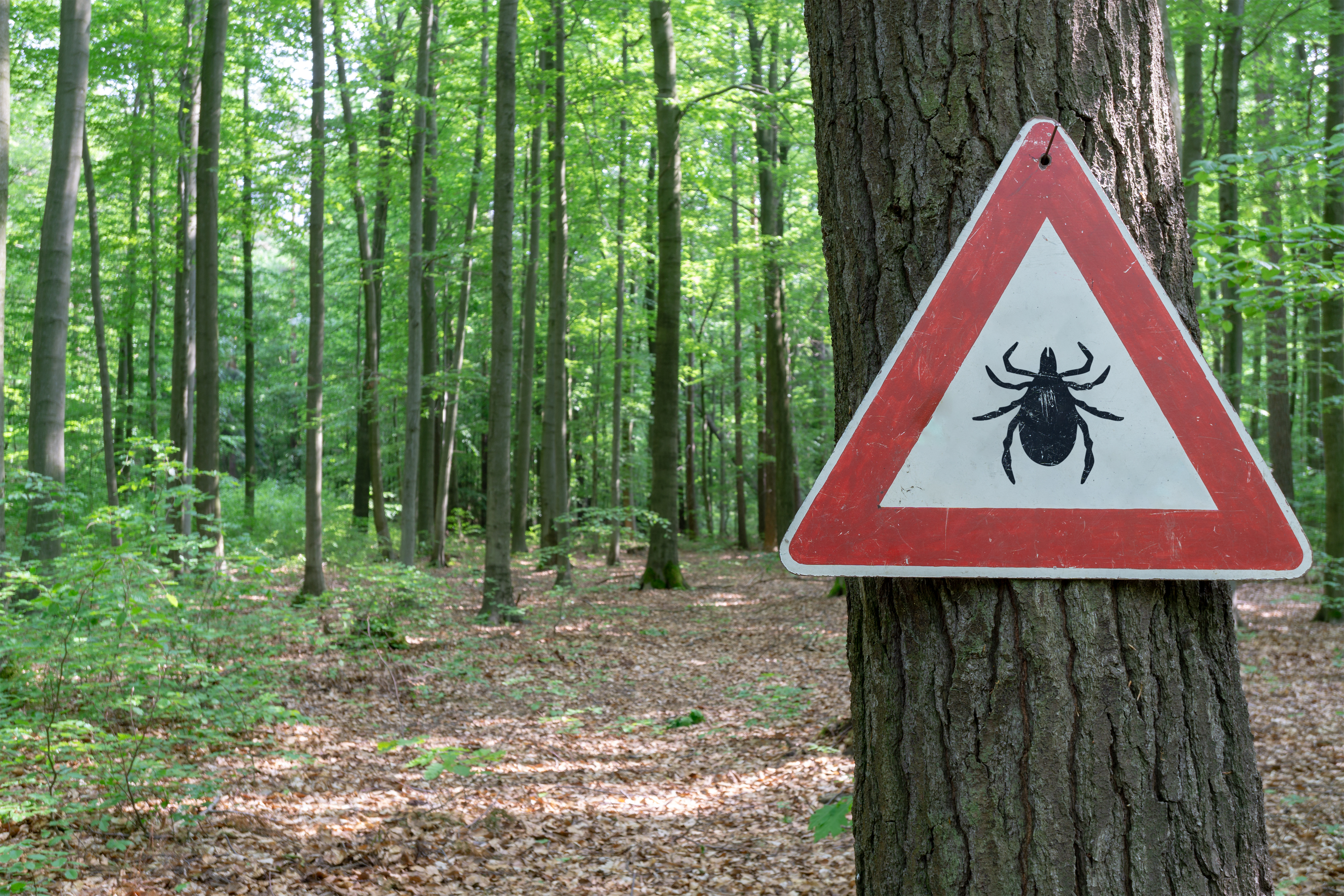I love the forest, the local pond, the trails—really any and all rough patches of nature I can find. But I have never dug ticks—and having known people who have suffered from tick-borne diseases, I especially don't like ticks for my kids. They not only give me the heeby jeebies—they can carry scary diseases. As much as I would love to steer clear of ticks completely, they are like any risk for my kids and me — I have to be educated and focus on how to manage the risk so we can still enjoy the great outdoors. Managing the risk that ticks pose comes down to answering three key questions:
- What makes ticks tick?
- How can we prevent tick bites?
- What do we do when we find a tick on or in one of our kids?
Armed with this information, we and our kids have become empowered to stay outdoors and stay safe. Plus if kids have learned anything in this past year, it's how to face a danger and find a way to thrive and take the steps to keep ourselves safe. So, these kiddos (and we) can do this!
Learn from the Experts
Learning more about ticks and what makes them tick can help grown ups and kids alike feel better able to make decisions that can keep us safe. To start, watch a Tinker Talk chat with our favorite Tick expert, Dr. Steven Rich of the University of Massachusetts. Learn from Steve as he breaks down the dangers and best ways to prevent and respond to tick bites. It'll help you keep enjoying the great outdoors and stay on top of ticks!
What's the danger?
First, as Dr. Rich reminds us, "Ticks aren't an instantaneous risk factor—you don't walk through the woods and brush up against a tick and suddenly get a life threatening disease." Ticks need to feed on us for hours—and they are super slow feeders—in order to pass a disease. So, time is on our side!Not all ticks present the same danger. If you can identify ticks, you can better identify the risks associated.See the chartof the common ticks at different life stages.Ticks at the nymph and adult female stage are the most likely to transmit disease. Though they eat all year, they usually feed in the spring and summer. You can find more information about the life cycle for each tick type on the University of Rhode Island’s TickEncounter.
According to the CDC, of all of the tick-borne diseases, the most common is Lyme, with an estimated 300,000 cases in the U.S. each year. That is less than .1% of the population; although, incident rates are definitely geography dependent. The highest rate reported in 2015 was in Vermont, with around 85.5 cases per 100,000 people. Lyme can usually be treated with a round of antibiotics, and, in most cases, has no lasting effects, especially if caught early.
The CDC has some cool maps to show the geographic distribution of the most common ticks with links to their associated diseases. It is helpful to know the symptoms of the most common tick-borne diseases in your area, but remember that the tick-borne diseases are not very common.
How do you prevent tick bites?
So, now we get to the risk management part! In short, the best way to avoid tick-borne disease is the prevention of a tick bite. The good news is you do not need to stay indoors! Thanks to the following tested and trusted techniques, tick bites can be minimized.
Both the CDC and TickEncounter have some great information on prevention techniques, and I highly suggest taking a look at both sources for the latest and greatest information.
Here is a quick list of our favorite prevention measures:
- Avoid optimal tick habitats such as areas that have high grass, lots of brush or leaf litter.
- Time your walks towards the middle of the day if you can. Ticks hide out from the hot sun, so tend to be less "out and about" mid day.
- Wear light-colored clothing so you can spot a moving black dot and pull it off yourself or your little ones.
- Tuck pants into socks and shirt into pants. Yes, you feel a little silly and sometimes hot, but you buy yourself much more time to spot the tick when you make them search for a spot to latch on.
- Use a lint roller over clothes and skin to catch ticks you didn’t spot before you get in the car or house. Don’t have a lint roller? Do a visual check before leaving the woods.
- Take off the clothing you wore outside and toss them in the dryer on high heat for at least 10 minutes. Most ticks won’t survive the heat cycle.
- Take a shower within 2 hours of being in a likely tick zone. Ticks can be slow to nibble, so a shower can wash off any ticks that haven’t yet bitten.
- Do daily tick checks: generally, the longer a tick is feeding, the higher your chances of contracting a disease. Ticks can hitch a ride on backpacks, blankets, animals, you name it — so best to be safe and keep the tick check a part of the daily routine, at least in the prime tick months. Favorite places ticks like to go on your body include areas between the toes, back of the knees, groin, armpits, and neck, the scalp, and behind the ears.
- Use tick repellant: for me, it’s been worth designating some of my family’s clothing as “field gear” and treating it with permethrin, particularly shoes. We also use both natural and non-natural repellant sprays when necessary. The EPA has a neat tool to help you decide which, if any, repellant options are best for you and your family.
Make Finding Ticks FUN!
First, try a song that not only teaches kids where to find ticks on their body, but makes finding ticks fun! Here's one cute example on You Tube.
One summer, our kids went to summer camp at a local nature center and loved the weekly tick finding contest between the groups. Kids were taught to find ticks and were incentivized to find the most ticks on one another after time outside. What a brilliant way to flip the script on ticks. We now have a monthly tick challenge and the kid who finds the most ticks on family members and pets wins—it's motivated kids to remember to do tick checks at night and to get really good at finding ticks!
What do I do if I find a tick?
To start, just breathe. Then, remember that having a tick crawling on you or your kids is creepy, but not necessarily cause for alarm. Try to collect it and dispose of it, but most importantly get it off your body before it can dig in.
If the tick has bitten one of you, what matters most is to get the tick off as quickly as possible. As Dr. Rich advised, "The first thing I always say about getting a tick off is just remove it—plain and simple. Don't make it complicated.You don't need to buy anything fancy. So, rather than thinking, if you're out on a hike, "Oh, I got a tick on my leg, I've got to wait until I get back and use that very fancy device that I have," No! Just use a fingernail and just pull it off."
Once the tick is off or is dead, it can no longer feed and can no longer endanger its host.
If you can, identify the type of tick it was and make a note of the day when the tick was found, along with any idea about where you might have picked it up. This can help your doctor if you're one of the rare cases that get sick following a tick bite. You can also send the tick off to be tested by an organization like Tick Report. The test results can tell you if that particular tick was carrying any pathogens, which will not confirm that the human contracted any disease, but will give you a sense of the risk so you can see a doctor for help if needed.
In my many years of traipsing around in the woods (as an adventurer, I have not always stuck to trails), I’ve had a few tick bites. But, I have certainly tested these prevention steps, and they really work for limiting bites. The woods are still my happy place; and I still worry about ticks, but my kids and I have learned to manage the risk and live with them as part of the nature we love so much.

